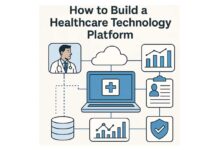Today, SaaS-based technologies’ adoption rate is soaring exponentially in almost every business department and management system, including ERP (Enterprise Resource Planning). As companies transition away from the brick-and-mortar systems, SaaS enterprise resource planning (SaaS ERP) provides working professionals with an opportunity to reduce costs and improve workplace efficiency.
But what is SaaS ERP? For those hoping to gain valuable insight into this multi-faceted data organization process, study the information below.
Definition of SaaS ERP
To understand SaaS ERP in its entirety, you should be able to define the acronym “ERP.” Enterprise resource planning (ERP) is a business software that integrates vital operations in a business. For instance, ERP automates and consolidates business operations related to human resources, inventory management, accounting, communication, sales, marketing, and manufacturing.
This integration is made possible by centralizing data in servers on a platform like SUSE and presenting it in a user-friendly, singular system. Today, it’s nearly inconceivable to imagine modern business without an operating ERP system. ERP systems are crucial in driving agility, boosting productivity, and catalyzing digital transformation in the business world.
Some examples of standard ERP systems include:
- Oracle
- SAP
- PeopleSoft
- Microsoft Dynamics AX/NAV
Now that you’ve acquired some basic ERP knowledge, you may be curious as to what SaaS is. By definition, SaaS is a cloud-based software-as-a-service. This software distribution model enables users to access data anywhere, anytime, as long as you have an internet connection. Unlike other software delivery methods, SaaS is previously installed and configured.
Having defined both terms individually, you can merge your knowledge of SaaS and ERP to conceptualize SaaS enterprise resource planning. SaaS ERP is ERP hosted on cloud-based software. In previous years, businesses utilized ERP systems installed on physical servers or stand-alone desktops. However, with cloud services at our disposal, ERP software is hosted virtually and is accessible anywhere, promoting the utmost convenience.
Benefits of SaaS ERP
After mastering the definitions, you’ll need to review the notable advantages of the SaaS ERP system. ERP systems are a valuable asset to a business. By automating and synchronizing business operations, ERP improves the speed of service delivery and increases efficiency. Couple this with the ability to access your business data from anywhere, SaaS ERP systems are a gold mine for business executives hoping to spike sales figures.
Other benefits of SaaS ERP include:
Reduced costs
Even though the cost of acquisition of SaaS ERP is considerable, in the long-term, this cloud-based ERP software saves your business thousands of dollars. Because you’re only required to purchase a single system rather than multiple systems, your company can avoid incurring licensing fees. After raking in these savings, you can funnel these financial resources into different company departments or staff salaries.
Additionally, after purchasing a SaaS ERP system, you can reduce monthly training costs. How so? End users are trained on a single system rather than on multiple platforms. This simplicity factor shortens the learning curve and maximizes knowledge retention while minimizing and the costs of training.
Note that SaaS ERP systems are modular-based, meaning you get to choose the functions that align with your business’s unique industry needs. This flexibility allows you to spend only on the modules compatible with your business type.
Remote access
With SaaS ERP, you can access your data from any device, as long as you connect to the Internet—making the system conducive to on-the-go lifestyles. This adaptability and accessibility are incredibly vital for traveling business executives, as these working professionals can make informed decisions on demand from an airport terminal or off-site cafe.
Data security
When you depend on SaaS ERP, you won’t have to worry about the risk of physical damage caused by natural disasters (fires, floods, earthquakes, etc.) or theft, prevalent with physical servers. However, be mindful of data security breaches, as cases of cyber-attacks skyrocket.
Staying updated
SaaS ERP enables you to stay up-to-date with emerging technological advancements. Cloud-software is likely to receive upgrades as soon as new features surface on the market. Don’t settle for systems that lag behind their competitors. Choose software that values innovation and refuses technological stagnation.
Demerits of SaaS ERPs
Much like other software programs, SaaS ERP isn’t entirely faultless. Unfortunately, this system has some drawbacks you’ll need to account for. These are:
- High initial costs that aren’t feasible for small businesses
- Lack of control
- Can’t access the system without an Internet connection
- Slow-loading times
- Complex systems that can be challenging to navigate
It is worth noting that the above drawbacks vary from one business to another. The list is just a general guide.
SaaS ERP or on-premise ERP?
Old habits die hard. Some business executives may entertain the idea of sticking to traditional ERP in the interest of savings. While the “if it ain’t broke, don’t fix it” mentality may be mainstream in other industries, if you operate in the tech or business sector, you’ll need to keep pace with your competitors and invest in advancing technology and software. Otherwise, sales could plummet while potential clients blacklist your company as outdated.
If you’ve considered moving your on-premise ERP to the cloud, you can make the transition gradually. Despite popular opinion, you don’t have to tackle the task-at-hand all at once.
Bottom line
Businesses can capitalize on the plethora of benefits yielded by SaaS ERP. Thanks to SaaS ERP systems, access to up-to-date technology and professional support is within businesses’ reach without necessarily breaking the bank. However, it’s prudent to observe due diligence while selecting providers that offer solutions tailored to your business’s needs.







